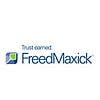
James Nowak

The higher education landscape is quickly evolving. The institutions that are nimble, and the most prepared to embrace change, are the ones that will set themselves apart as we embark on life after COVID. In the seemingly perpetual wake of a pandemic entering its third year, schools are being challenged to meet the new academic needs of their students while facing unprecedented financial obstacles. Faculty have been forced out of their comfort zones and into the virtual space, paving the way for the classroom of the future, while senior administrators try to balance budgets with declining enrollments.
Somewhere in between lies the student service experience, a critical yet often overlooked component on every college campus. Simply put, students and their families have more choices, are more informed than ever, and their expectations are extremely high. Schools must be committed to the deconstruction of the traditional barriers that stand in the way of student access in an effort to meet students and their families where they are.
The most consequential student service areas on any campus are those of Financial Aid, Student Accounts (Bursar) and the Office of the Registrar. These areas support students by providing access to the funding necessary to finance their education, demonstrating return on investment, communicating progress toward degree completion, monitoring academic progress, and so much more. These functions play a key role in the recruitment, persistence and retention of a robust student body.
While the functional operations of these three areas are inevitably very connected, their policies, procedures, workflows, and communication patterns tend to be disjointed, severely outdated and nearly impossible for students to navigate. Their physical locations are disconnected, and tasks are often still communicated via email and carried out on paper. This can be frustrating for students, who dread long checklists and even fundamental interactions with student service staff. Connecting with students in meaningful ways can revolutionize the student service experience, while infusing technology into your day-to-day operations can dramatically impact service delivery from day one.
Despite the fact that institutions are aware of the central and significant role that student services play in the life cycle of a student, many experience a myriad of roadblocks that put these transformational efforts to the back burner. Budgetary constraints, combined with and an inadequate talent pool to administer such change can cause many in senior leadership to spin their wheels.
For institutions where a lack of operating dollars and/or change agents on campus are the main culprit, financial leaders could consider earmarking a portion of their institutional portion of The Higher Education Emergency Relief Funds (HEERF), a source of funds received by the government specifically designed to support these types of institutional changes.
What can HEERF funds be used for?
In a cover letter dated April 21, 2020, the Secretary of Education provided colleges and universities a broad spectrum of guidance for the potential uses of the institutional portion of the HEERF relief funds:
“I encourage you to use the portion of your award for Recipient's Institutional Costs to expand your remote learning programs, build your IT capacity to support such programs, and train faculty and staff to operate effectively in a remote learning environment…I also encourage you to consider using the funds for Recipient's Institutional Costs to expand support for your students with the most significant financial needs…including eligible expenses under a student's cost of attendance, such as course materials, technology, health care, childcare, food, and housing."
Despite the alignment between HEERF support and furthering the higher education mission, many institutions have yet to exhaust their institutional portion of HEERF. According to the U.S Department of Education’s COVID Relief Data, only 56% of total HEERF funds have been spent as of December 31, 2021.
As an alternative to spending that only serves as short-term fixes to your problems of today, shift your focus to areas of innovation that can transform and enable your leaders to invest in new ways to do business within your student service areas for tomorrow. This creates an institution on course for a better and more sustainable future - one that more neatly aligns campus services to the needs of students, faculty, staff, and the communities that they serve.
Connect with Freed Maxick’s Higher Education Consultants
Freed Maxick’s Higher Education Consulting practice focuses on bringing innovation to colleges and universities in order to drive change and transform existing process
Please schedule a complimentary discussion with our team at 716.336.7067 for an in-depth discussion of your needs.